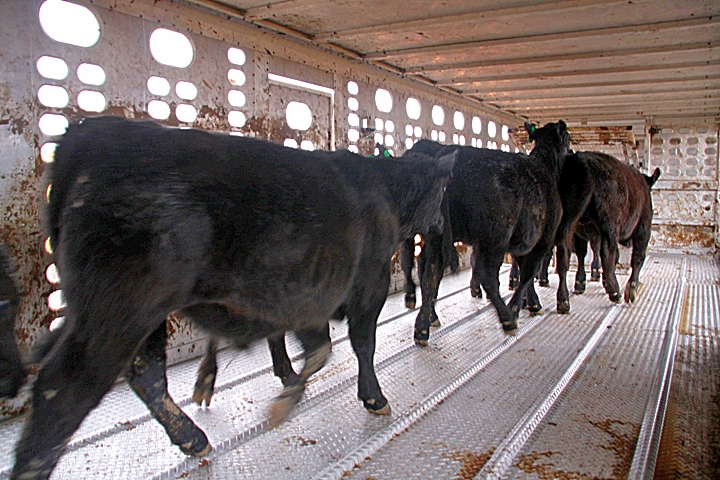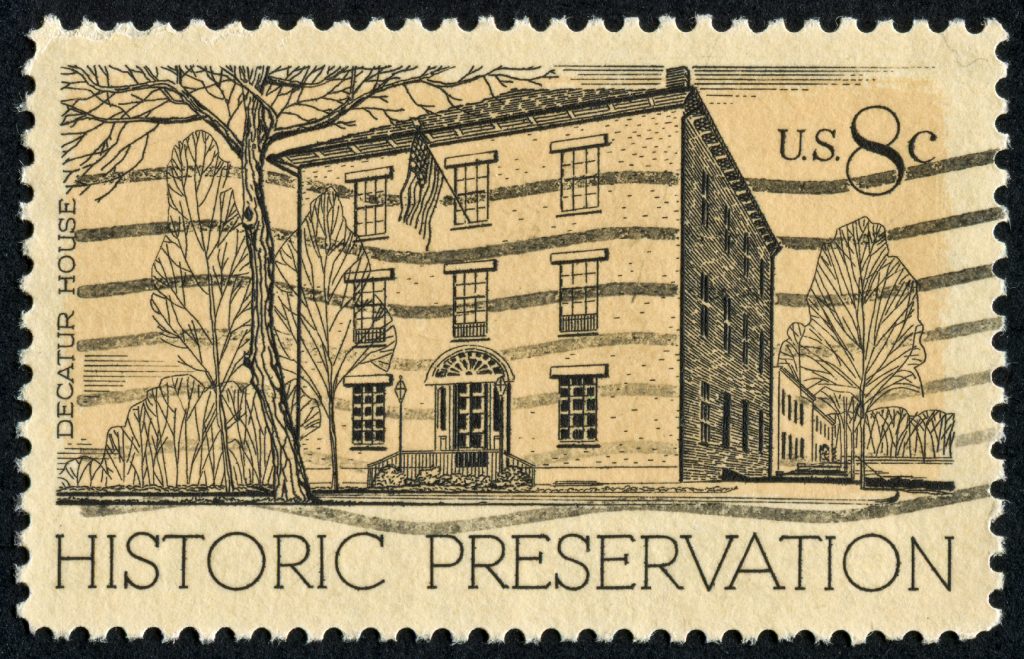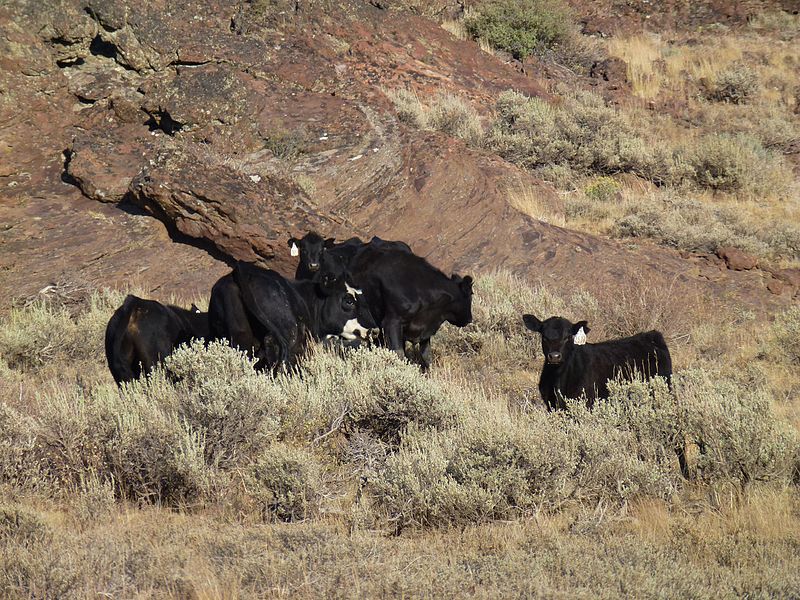New information discovered from the legal battle against farmer Robert Brace reveals that his plight has been part of a broader, decades-long crusade led by a select group of environmental officials, with the active support of special-interest activists, to expand wetlands and challenge decisions by agriculture regulators.
Commentary by Lawrence A. Kogan
When Assessing Burdens for Farmers, Other Landowners, White House Shouldn’t Duck Overhaul of Wetlands Regulatory Juggernaut
Last year, two WLF Legal Pulse posts (here and here) explored the federal government’s incremental expansion of control over privately owned agricultural property through the Clean Water Act (CWA) and the law’s hydra-like oversight of wetlands. Those commentaries presented one Erie, Pennsylvania farmer’s 30-year legal battle as a microcosm of how agenda-driven regulators can upset the balance between environmental protection and individual rights. Ironically, that balance empowers small and family-farmers’ contribution to another goal of green activists: sustainable local food production.
New information discovered from the legal battle against farmer Robert Brace reveals that his plight has been part of a broader, decades-long crusade led by a select group of environmental officials, with the active support of special-interest activists, to expand wetlands and challenge decisions by agriculture regulators. That campaign, and its success over the course of numerous presidential administrations, should not go unnoticed as the current regulatory reform effort, especially as it relates to “waters of the U.S.” (WOTUS), moves forward.
U.S. v. Brace, Brief Background
In 1988, Brace secured a coveted “commenced conversion” determination for part of his farm from the U.S. Department of Agriculture’s Agricultural Stabilization and Conservation Service (USDA-ASCS). The “Swampbuster” provision of the Food Security Act of 1985 (FSA) encouraged wetlands conservation by limiting and eventually denying USDA funding to farmers who were converting wetlands to croplands. The FSA exempted from Swampbuster farmers like Brace who could demonstrate that their conversion began before the end of 1985. The commenced-conversion designation also excluded those lands from being “waters of the U.S.” under CWA § 404 as long as the farmer completed the conversion within 10 years.1
Approximately one year before securing the commenced-conversion designation (September 1988), Brace had received administrative violation notices from EPA, the Army Corps of Engineers, and the Fish & Wildlife Service (FWS) under the CWA (July 1987), without regard for the FSA, which those agencies and their attorneys later deemed irrelevant to Brace’s activities.2Under the FSA, FWS maintained a “consultative” role in the Swampbuster program, though it is far from clear that the agency could contest USDA-ASCS determinations such as the one it had awarded Brace.
In October 1990, after FWS’s Pennsylvania Field Office decided (erroneously, and in the alternative) that Brace had not qualified for and/or had abandoned the commenced-cropland conversion, the government brought an action against him for violation of CWA § 404, also, in apparent disregard of the clear FSA-CWA overlap.3 The suit alleged that Brace’s commenced conversion of wetlands had destroyed the habitat of North American migratory birds and the quality of wetland waters. After the U.S. Court of Appeals for the Third Circuit reversed Brace’s initial victory in the trial court, he entered into a consent decree in 1996. Brace’s implementation of the decree, which required him to recreate 32 acres of wetlands (some of which did not previously exist), led to the flooding of additional, previously dry, land.
Adding insult to injury, EPA reopened the 1990 case 11 days prior to President Donald J. Trump’s inauguration in 2017, ostensibly to enforce the consent decree. It also simultaneously initiated a second action involving an adjacent and contiguous field that also previously received the commenced-conversion determination. On July 3, 2017, Brace filed administrative claims against EPA, the Army Corps, and FWS under the Federal Tort Claims Act for $8 million of lost revenue.
Activist Regulators & Interest Groups’ Anti-Cropland Campaign
The government’s 1990 legal action against Brace, and its reopening of the suit last year, must be viewed in the context of a broader, ongoing campaign to vastly expand wetlands at the expense of landowners’ and land users’ rights.
FWS Communications and Congressional Hearings
A chain of official FWS documents submitted during a June 24, 1988 House Agriculture Committee hearing by a witness from the National Wildlife Federation (NWF) shed light on FWS’s efforts to influence or undo USDA-ASCS commenced-conversion decisions in Minnesota, South Dakota, and North Dakota, particularly on private lands situated within public drainage districts containing temporary wetlands.
One document was a January 1988 letter from an FWS regional director to the conservation (and hunting advocacy) group Wildlife Management Institute (WMI). The letter expressed alarm about FWS field-operative observations that USDA had not been implementing the Swampbuster provisions “fully consistent with the purposes, intent, and letter of the Food Security Act or the step-down regulations,” and that the FWS’s “role with U.S. Department of Agriculture agencies ha[d] been continual hair-splitting that accommodate[d] more drainage.”
This document also indicated that the FWS director had apparently shared with WMI a non-publicly disclosed FWS Region 3 memorandum sent to FWS National Director Frank Dunkle to “see this issue elevated to the investigation level so that corrective measures are implemented through the appropriate oversight channels.”
A second document indicated that FWS National Director Dunkle shared the FWS regional director’s concerns. A February 23, 1988 memorandum from Dunkle to FWS regional directors of Regions 1-7 expressed “[s]erious questions regarding the effectiveness of Swampbuster implementation efforts,” and instructed all FWS Regional Directors to “offer the greatest possible technical support to agencies of the Department of Agriculture as they proceed[ed] with field implementation” of the FSA’s Swampbuster provisions.
A third document, a March 8, 1988 memorandum from the then-Acting FWS Region 3 Director to the Directors of the FWS Region 3 Branch of Special Projects (BSP) and Division of Endangered Species and Habitat Conservation, continued the correspondence chain. The communication implemented Director Dunkle’s memo, noting with alarm how “Swampbuster, however conceived and legislated in Washington, has had minimal success in Region 3 in preserving wetlands on private lands involved in Department of Agriculture commodity programs.”
It also emphasized how the USDA-ASCS: 1) “ha[d] transformed wetlands into non-wetlands through lax interpretation of the regulations” and frequently failed to consult with FWS except where USDA standards were unable resolve an issue; 2) differed with FWS over what constituted a Swampbuster “violation;” and 3) decried the loss of Type 1 wetland potholes “needed for duck pairing activity in the early spring.”
A March 9, 1988 memorandum from the Supervisor of the FWS’s North Dakota Wetland Habitat Office to the FWS’s Region 6 Farm Bill Coordinator completes the communication chain. The memo was meant to be incorporated into FWS’s forthcoming proposals for the 1990 Farm Bill, which ultimately proceeded “to make the act of drainage a violation.”4 The memorandum emphasized how USDA-ASCS county offices in North Dakota had negatively reacted to the FWS’s 1986 and 1987 reporting of hundreds of “potential violations” of the FSA’s Swampbuster provisions. “ASCS response has been that it is not the responsibility of the Service [FWS] to report potentials, they do not want the information and they have reacted by going to the press accusing the Service of being ‘Spies in the Sky.’”
Testimony prepared for the June 24, 1988 House Agriculture Committee hearing reflect the environmental-activist community’s full-throated support for FWS and its perspective on cropland vs. wetlands. The NWF testimony, submitted on behalf of its Minnesota affiliate, NRDC, the Environmental Defense Fund, and others, alleged, inter alia, that the USDA Soil Conservation Service and ASCS officials in Minnesota, North Dakota, and South Dakota had committed general improprieties and abuses in implementing the FSA’s Swampbuster rules.
The Wildlife Society, “an international association of [current and former] professional wildlife managers working in the public [governmental] and private sectors,” wrote “the commenced conversion determination regulations [had been] interpreted inappropriately” by the USDA-ASCS, which had allegedly failed to “require appropriate and adequate evidence necessary to enforce [and strictly interpret] conversion determination regulations.”
The National Audubon Society expressed support for retaining the FSA’s Swampbuster provisions to ensure that “further conversion of wetlands […] to croplands would be greatly reduced.” More extensive narrative reports issued in 1988 (p. 17) and 1989 (pp. 18-19), by different wetland-management districts of Audubon’s North Dakota chapter detailed shortcomings of the ASCS’s Swampbuster compliance-monitoring process, including commenced-conversion determinations, that echoed those described by the NWF.
Farm interests’ testimony at that same 1988 hearing explained the major impact environmental and wildlife groups had enjoyed on revisions of the FSA and USDA implementing regulations. The Minnesota, North Dakota, and South Dakota Farmers Unions (p. 14) and the Minnesota Association of Wheat Growers (p. 2) testified that the activist groups collectively managed to largely tilt both the interim (June 1986, July 1986) and final (September 1987) regulations the USDA adopted for the purpose of implementing the FSA’s Swampbuster provisions against cropland use.
GAO Report
House Agriculture Committee Chairman E. (Kika) De La Garza relied on the environmental activists’ prepared testimony and the FWS documents spotlighted in them when requesting the U.S. General Accounting Office (GAO) to investigate USDA’s questioned practices. The GAO issued its reported findings in September 1990 (Report RCED-90-206), less than one month prior to the commencement of the government’s suit against Robert Brace.
The report focused, in part, on USDA’s “implementation of the wetland provisions to reduce wetland conversions.” Chapter 4 repeated many of the claims the FWS, the National Wildlife Federation, and the Wildlife Society had advanced concerning group drainage-district projects in North Dakota, including that “application of the [Swampbuster exemption] criteria has not always been consistent; the documentation provided does not, in many instances, support the exemption decisions; and consultation with the Fish and Wildlife Service was not always carried out as required by law.”
GAO concluded that “the changing criteria and sometimes contradictory nature of commenced conversion decisions” led to county committee and other ASCS official decisions resulting in the drainage of wetlands, especially where group projects were involved. The report noted that, as the result of these phenomena, the NWF had repeatedly intervened and requested the ASCS to modify its commenced conversion decisions during 1987-1989. It recommended that the Agriculture Secretary “(1) monitor the application of the wetlands commenced conversion criteria so the decisions made are consistent and (2) enforce the requirements of the Fish and Wildlife Service consultations on commenced conversion decisions in order to utilize its expertise in the area.”
Ducks Unlimited Memorandum of Understanding
One interest group’s involvement in elevating wetlands protection over farmers’ private property rights was formally memorialized in writing in the mid-1980s. The Fish & Wildlife Service executed a memorandum of understanding (MOU) on March 14, 1984 with the Interior Department’s Bureau of Land Management (BLM), the USDA Forest Service (USDA-FS) and Ducks Unlimited, Inc. The group’s stated mission is to “conserve[], restore[], and manage[] wetlands and associated habitats for North America’s waterfowl.” That preservation, of course, allows the groups’ members to better enjoy their passion: duck hunting. More habitats, more ducks to shoot.
The MOU, a copy of which the government has thus far refused to produce in discovery in the Brace case, “provide[d] the foundation to establish a dynamic habitat improvement program on public lands within the National Forest System branch of the Forest Service.” As the relevant sections of two successor MOUs from 1998 and 2009 reveal, however, the agreement now impacts “riparian areas and associated uplands on private lands” (emphasis added) situated within DU and federal agency-identified wetland ecosystems and watershed areas.
Activist Litigation and Faux Legal Scholarship
During September 1988, at approximately the same time the USDA-ASCS Committee in Erie County had granted Mr. Brace’s two fields a commenced conversion determination, the Bottineau County, North Dakota ASCS Committee granted the same to Bottineau County Water Resource District for land covering 139 square miles. That and similar USDA-ASCS determinations in other areas of North Dakota, as well as in Minnesota and South Dakota, drew the ire of FWS bureaucrats and their activist-group allies.
Unable to persuade the national ASCS Deputy Administrator to reverse the Bottineau County decision, the NWF brought suit in 1989. The district court dismissed the complaint on the ground that “appellants’ injuries were insufficient to give them standing.5 The Eighth Circuit reversed, holding that the NWF had established Article III standing to present its members’ claims before the federal courts.6
The court reached this conclusion based, in part, on congressional findings regarding the value of wetlands that were included in a 1985 Food Safety Act-related bill that was ultimately enacted into law as the Emergency Wetlands Resources Act of 1986. The NWF had referenced this same committee bill language, as explained in a related House Committee report, in the prepared testimony submitted at the aforementioned June 1988 House Ag Committee hearing.
The NWF proceeded to embellish the significance of its Eighth Circuit victory, and the profound wrongs that it purportedly righted, in a slanted law review article authored by a Counsel with the group’s Prairie Wetlands Resource Center.7 The article highlighted how the court found that “the link between the wrongful issuance of a commenced determination and injury resulting from wetland drainage [was] not too speculative to support standing.” It also concluded that, by “allowing nonfarmers to sue the ASCS,” the court’s ruling effectively compelled farmers “who intend[ed, thereafter,] to convert wetlands to consider the cost of litigation and possibility of having invalid exemptions reversed by a federal court.”
Furthermore, the author disparaged the ASCS as “institutionally biased,” ASCS personnel as “lack[ing] technical expertise [and formal training] in wetland issues,” and part-time ASCS committee members as “sometimes personally biased” and “hav[ing] little professional or financial incentive to enforce laws or regulations with which they disagree[d]. Finally, he discussed the NWF’s extensive role in drawing attention to and ensuring the stricter implementation and enforcement of the FSA’s Swampbuster provisions and in triggering the 1990 GAO report which focused, in part on improper commenced conversion determinations.
Given the timing and sequence of this NWF litigation relative to the FWS administrative challenges to USDA-ASCS commenced conversion determinations, both in the Brace case and in the Midwest, the likelihood these events had been thoughtfully choreographed should not be overlooked.
Conclusion
The Trump Administration has hailed how America’s farmers have been relieved of their prior regulatory burdens.8 Most relevant to the subject of this commentary, EPA has delayed by two years the implementation of the previous administration’s WOTUS rule, which would have added more arms to the wetlands regulatory hydra, and with the intent to rescind the rule. That is laudable, but the fact that EPA continues it legal harassment of Robert Brace, and memoranda are still in place that empower activist groups, such as the 2009 MOU with Ducks Unlimited, make it clear that much work remains.
The wetlands regulatory juggernaut is deeply entrenched in the federal government, and it is rather adept at surviving and quietly working with friendly activist groups like the NWF that can operate as “shadow regulators” through litigation and other tactics. The White House should not only closely oversee the WOTUS rule’s dismantling, it must also work with environmental-agency heads to ensure that environmental protection and individual rights are properly balanced when dealing with America’s traditional farming communities.
* Mr Kogan is Managing Principal of The Kogan Law Group, P.C. New York, NY and President of the Princeton, NJ-based nonprofit Institute for Trade, Standards and Sustainable Development. He currently serves as defense counsel representing the Brace family in EPA-re-initiated litigation.
Notes
- For a more detailed explanation of the FSA and its converted-cropland provisions, see my April 20, 2017 post at https://wlflegalpulse.com/2017/04/20/us-food-security-and-farmers-livelihoods-at-stake-in-waters-of-the-us-rule-rewrite/.
- See United States v. Brace, No. 1990-229 (W.D. Pa.), Deposition of David J. Putnam (Apr. 7, 1992), at 45, wherein former U.S. Department of Justice Trial Attorney, David A. Dana, Esq. states as follows: “Just for the record, not to be repetitive, the United States has a standing objection on relevance grounds to questions regarding the commenced determination of the swampbuster provisions since it’s [an] entirely separate program unrelated in this case as to whether a violation occurred of the Clean Water Act.”
- See U.S. Army Corps of Engineers, Regulatory Guidance Letter (RGL 90-7), “SUBJECT: Clarification of the Phrase ‘Normal Circumstances’ as it Pertains to Cropped Wetlands (Sept. 26, 1990; exp. Dec. 31, 1993), §§ 5.d-5.e.; see also 33 CFR § 328.3(a)(8) and 40 CFR § 230.3, 58 FR 45008, 45031-45033, 45036-45037 (Aug. 25, 1993).
- See Anthony N. Turrini, Swampbuster: A Report from the Front, 24 Indiana L.R. 1507, 1511 (1991), https://journals.iupui.edu/index.php/inlawrev/article/view/2935/2859(“In a major victory for conservationists, swampbuster was amended to make the act of drainage a violation. Farmers who manipulate wetlands are ineligible for subsidies until they restore the affected wetland to its original condition.”).
- See National Wildlife Federation v. ASCS, No. A4-89-067, slip op. at 4 (N.D. Aug. 2, 1989).
- National Wildlife Federation v. ASCS, 901 F.2d 673, (8th Cir. 1990).
- Anthony N. Turrini, Swampbuster: A Report from the Front, 24 Indiana L.R. 1507 (1991).
- See, e.g., Ken Maschhoff, Trump’s First 100 Days Bring Regulatory Relief for Farmers, Des Moines Register (Apr. 26, 2017), https://www.desmoinesregister.com/story/opinion/columnists/2017/04/26/trumps-first-100-days-bring-regulatory-relief-farmers/306647001/.
See more from The Legal Pulse here
Free Range Report
Thank you for reading our latest report, but before you go…
Our loyalty is to the truth and to YOU, our readers!
We respect your reading experience, and have refrained from putting up a paywall and obnoxious advertisements, which means that we get by on small donations from people like you. We’re not asking for much, but any amount that you can give goes a long way to securing a better future for the people who make America great.
[paypal_donation_button]
For as little as $1 you can support Free Range Report, and it takes only a moment.



